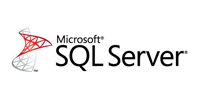AWS Public Sector Blog
Category: Best Practices
How streaming applications and virtual desktops help schools bridge the gap
Moving to remote operations can be difficult in any industry, but especially in education where various stakeholders need to be prepared – from students, teachers, families, and administrators. Moving a highly structured, in-person environment to online is no simple task, so educational leaders across age and learner groups seek out best practices to support remote learning, teaching, and core operations. Here are three examples of how the cloud can help education quickly scale to support disruptions.
From research sharing to collaborative communications: Addressing the needs of our public sector customers during unprecedented times
In support of governments and educational institutions around the world, AWS is quickly deploying people and technology to enable remote learning and home working. Our services can help address our customer’s most pressing challenges during this unprecedented time, including making sure citizens are productive with remote working solutions, that students can access online learning platforms, and that communications are reliable and available for public entities at all levels of government.
AWS expands access to tools that support remote learning and teaching as part of COVID-19 response
As part of our response to COVID-19, AWS is providing tools to support remote learning and teaching. This includes providing customers in the most affected regions with technical support, offerings, and AWS Promotional Credit, which help cover costs while enabling organizations to quickly stand up and scale their infrastructure and tools to meet demand, to help our educational technology providers and educators around the world quickly deploy or extend learning into the home.
Cloud economics: The value of a TCO assessment
Whether you’re beginning to think about migrating to the AWS Cloud or already planning your migration, you probably have questions such as how much migrating to the cloud will cost. Determining total cost of ownership (TCO) for a cloud migration project can be challenging when evaluating what-if scenarios, over-provisioning, outdated servers, legacy applications, or spreadsheets of stale data. Learn about some AWS TCO tools and best practices.
In case you missed it: February 2020 top blog posts round up
In February 2020, the AWS Public Sector Blog covered stories on the value of Earth observation data, the Smithsonian Open Access Initiative, and more. Watch The Brief, hosted by Sarah Worley from We Power Tech, to learn more, and scroll down for links to these stories.
Escape unfriendly licensing practices by migrating Windows workloads to Linux
Migrating enterprise workloads to Linux removes operating system license cost and frees your organization from disruptions caused by unexpected—and sometimes punitive—license policy changes. The effort required to re-platform from Windows to Linux varies depending on how the application was implemented. The key is to identify and target workloads with the right characteristics, balancing strategic importance and implementation effort.
Five best practices for building .NET on AWS
Amazon Web Services (AWS) knows how to run .NET applications, and provides .NET developers with resources for building, testing, deploying, and running their .NET applications. Watch our on-demand webinars to learn about migrating and building serverless or container-based apps on AWS. For .NET developers new to AWS, it is important to know about the tools, […]
The scoop on moving your Microsoft SQL Server to AWS
Microsoft SQL Server® is a relational database management system developed by Microsoft. AWS offers you the flexibility to run Microsoft SQL Server on Amazon Elastic Compute Cloud (Amazon EC2) or an Amazon Relational Database Service (Amazon RDS).
AWS Cloud Migration Guide: Methodology for migration readiness and cloud adoption
There are many reasons why public sector customers are migrating to the cloud. Some are migrating to increase the productivity of their workforce. Others are looking to consolidate data centers or minimize costly infrastructure sprawl and modernize legacy applications that have lost value over time. Additionally, visionary organizations are re-imagining their missions by upgrading to cloud-hosted technologies that drive digital transformation.
AWS Well Architected Framework: Best practices for building and deploying an optimized cloud environment
AWS has developed the Well-Architected Framework to help customers architect their mission-critical applications on AWS with secure, high-performing, resilient and efficient infrastructure. Well Architected can help you build and deploy faster, lower or mitigate risks, make informed decisions, and learn AWS best practices.









